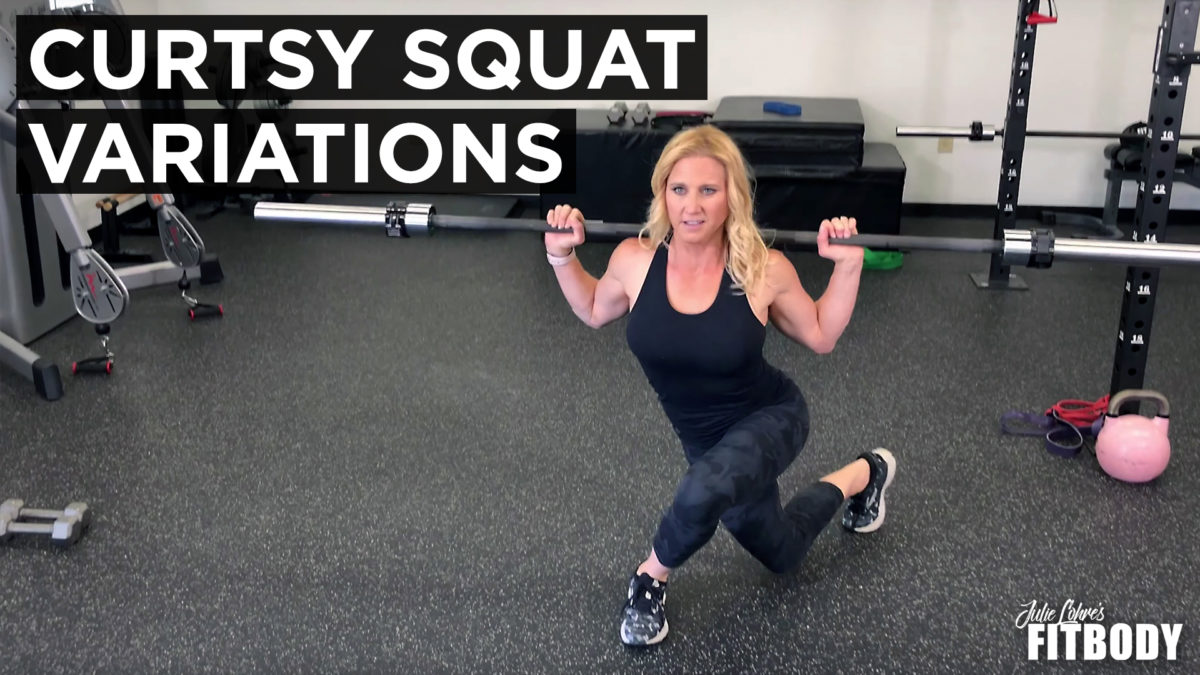IFBB fitness pro and creator of the FITBODY training method, Julie Lohre is here to teach you all about the curtsy lunge, and its major perks.
Sure, a curtsy lunge may sound like a weird, medieval, princess training exercise, but it’s actually one of the best exercises for toning your inner thighs. Yep, that hard-to-reach spot, along with your booty, are in for a real challenge (in the best kind of way) with this move. That is, if you do it correctly. Let’s dive in and learn more!
What is a curtsy lunge or curtsy squat?
The curtsy squat, also known as the curtsy lunge, combines elements of a squat and a lunge to target specific muscles in the lower body. This exercise is excellent for toning your inner thighs and glutes, addressing those challenging areas in a really effective and precise way.
What muscles does the curtsey lunge work?
This is one you are going to feel throughout your legs and glutes! The curtsy lunge primarily activates the glutes (gluteus medius, minimus, and maximus) and quadriceps (rectus femoris, vastus intermedius, lateralis, and medialis). Secondary muscles include the thigh’s hip abductors, calves (soleus and gastrocnemius), and hamstrings (biceps femoris, semimembranosus, semitendinosus).
Difficulty: Hard | Advanced
Equipment needed: None, but can be done with dumbbells or a barbell
How to do a Curtsy Lunge? Proper Curtsy Squat Technique
- Stand upright with your arms at your side. Either with or without weights.
- Take a step back and to the opposite side of the leg your are dropping back crossing back behind the leg doing the squat.
- Slowly lower your body down until your hips are in a normal squat position.
- Drive up through your standing leg bringing the curtsy leg back next to the squatting leg.
- Repeat on both sides alternating legs between each rep.
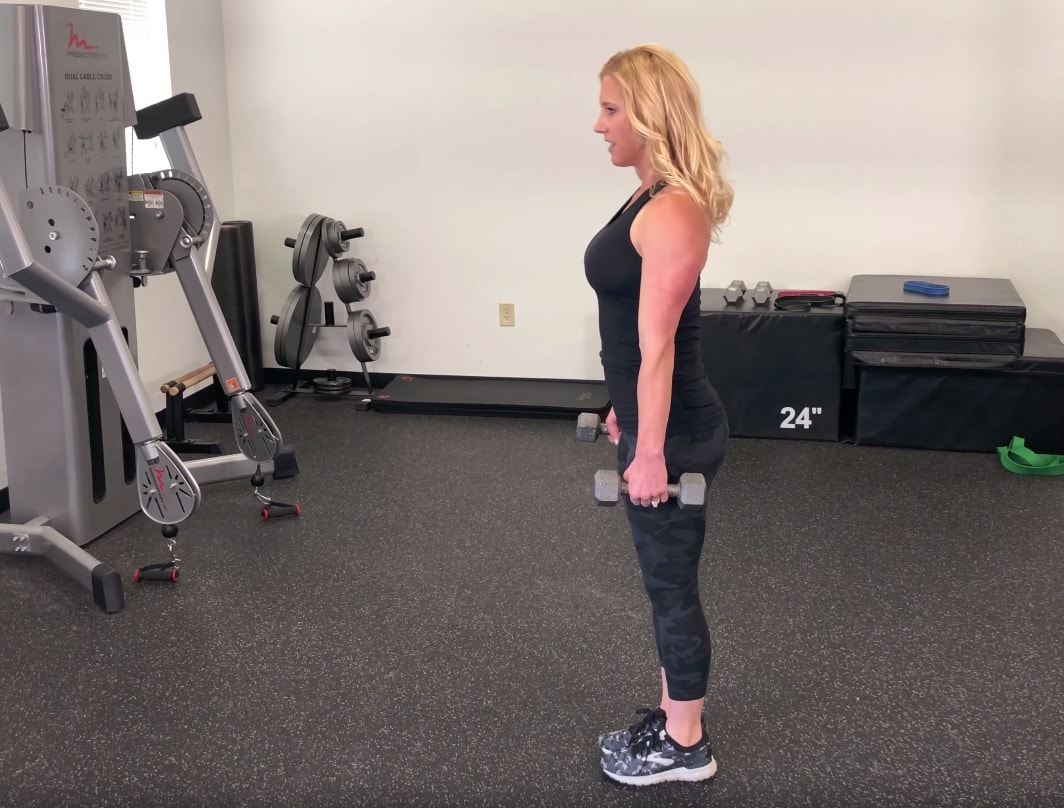
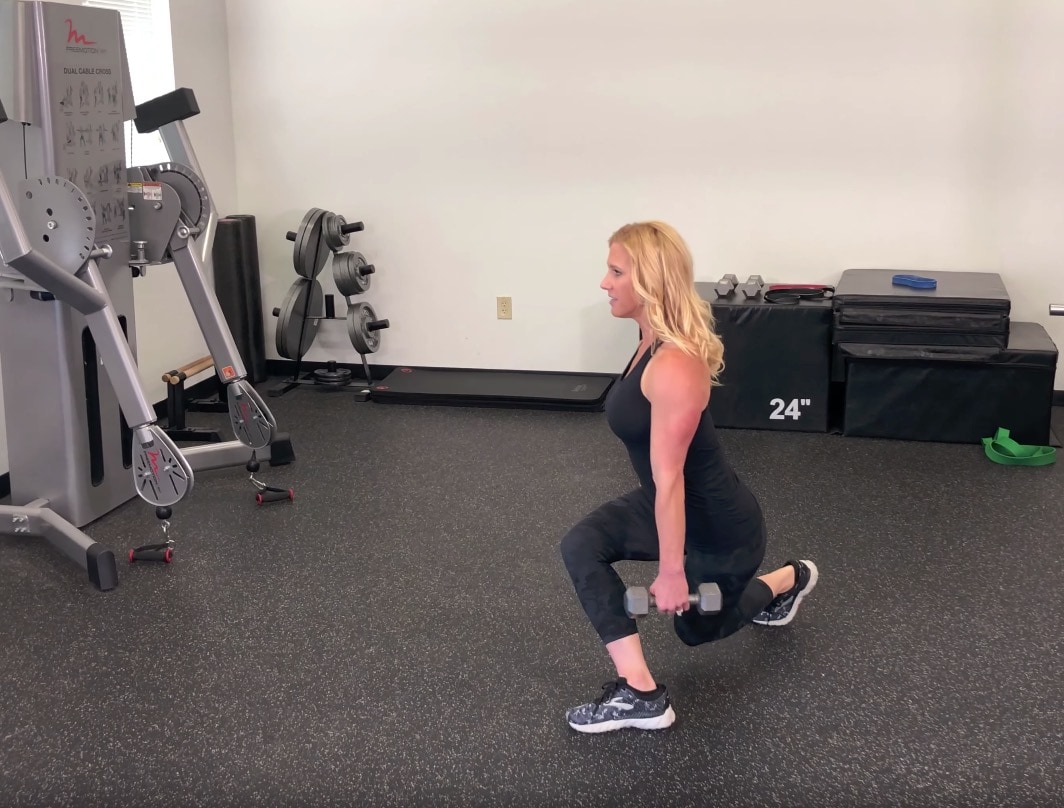
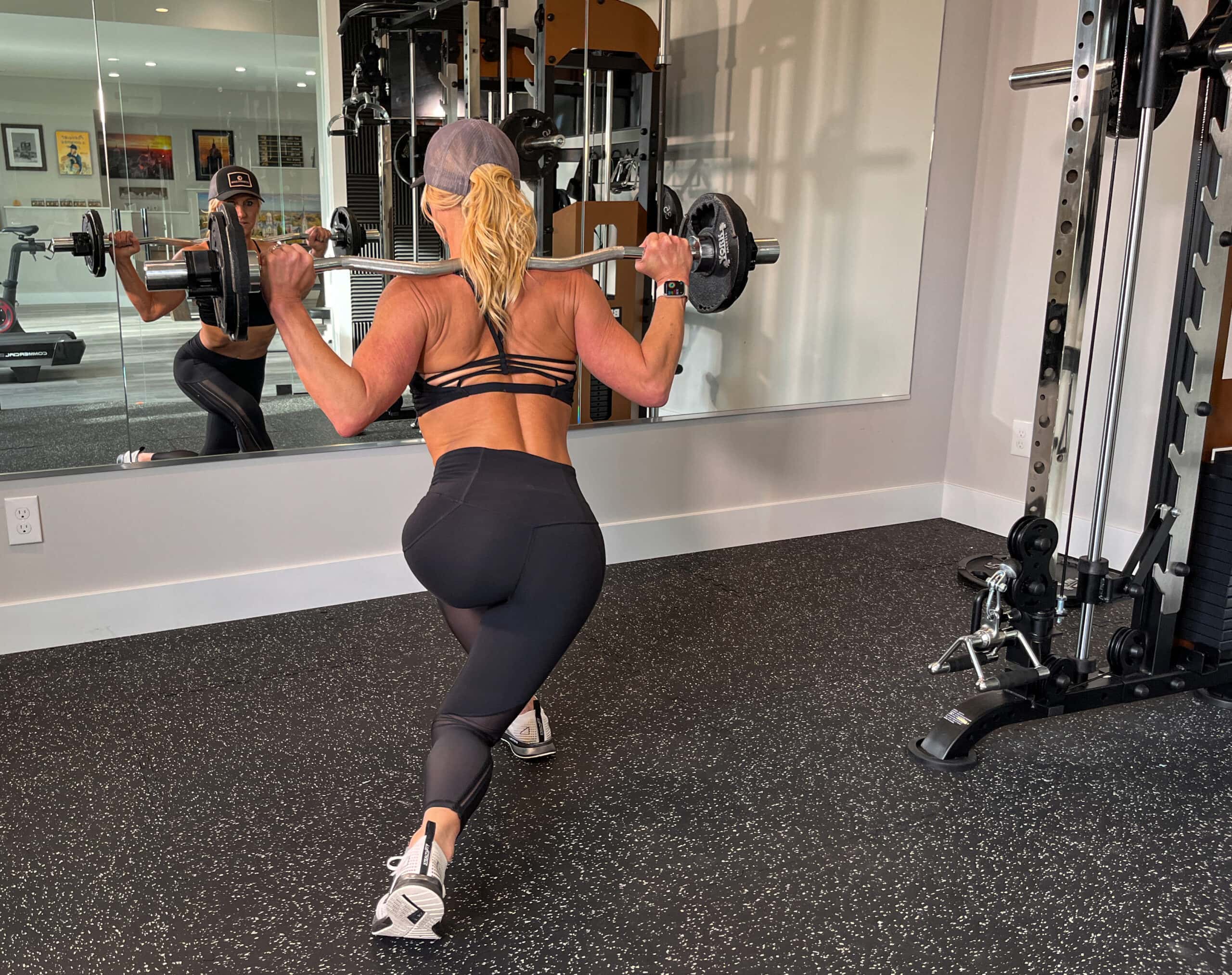
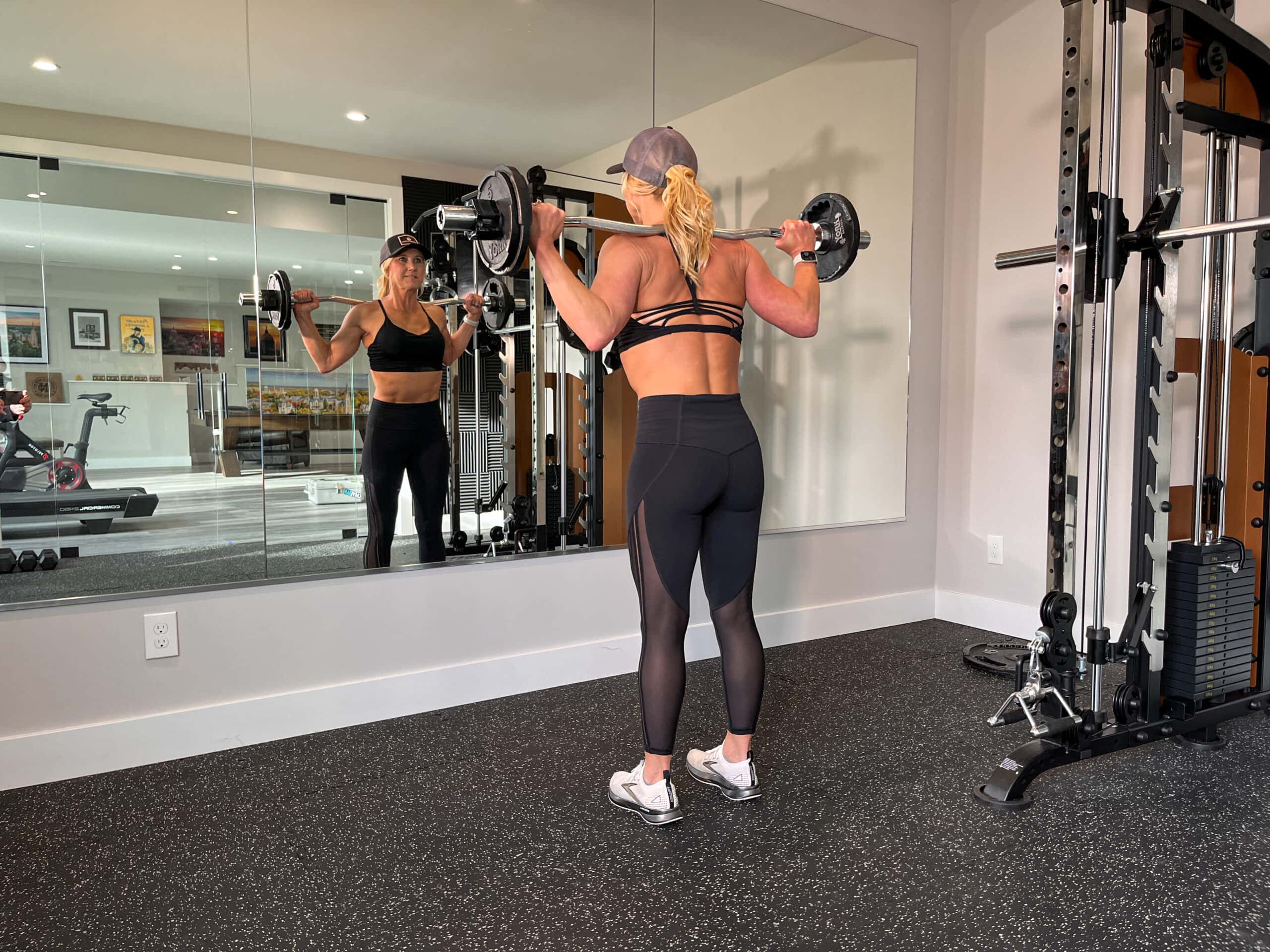
Benefits of the Curtsy Lunge
Including a curtsy lunge in your leg workout offers several benefits:
- Muscle Activation: It targets different muscle groups compared to regular lunges. Curtsy lunges primarily work the glutes, specifically the gluteus medius, which is essential for hip stability. They also engage the quadriceps, hamstrings, and calves.
- Improved Balance and Stability: This exercise requires balance and coordination, which helps to improve your overall stability. This is particularly beneficial for athletes or anyone looking to enhance their functional fitness.
- Enhanced Core Strength: To maintain balance during a curtsy lunge, your core muscles are engaged, which helps to strengthen your abdominal and lower back muscles.
- Joint Health: By working muscles around the knees and hips, curtsy lunges can help to support and stabilize these joints, potentially reducing the risk of injury.
- Unilateral Movement: Like other lunge variations, curtsy lunges are a unilateral exercise, meaning they work one side of your body at a time. This can help to identify and correct muscle imbalances, and improve overall body symmetry.
- Variety in Workouts: Adding curtsy lunges to your routine can break the monotony of standard lunges and squats, making your workout more enjoyable and engaging.
- Mobility and Flexibility: The movement pattern of a curtsy lunge involves a greater range of motion, which can help to improve hip mobility and flexibility.
- Functional Fitness: The movement mimics real-life movements, such as reaching diagonally, which can enhance your functional fitness and agility.
It’s important to perform curtsy lunges with proper form to maximize these benefits and avoid injury. If you’re new to this exercise, you might start with bodyweight only and then gradually add weights as you become more comfortable with the movement.
Curtsy Lunge FAQ’s
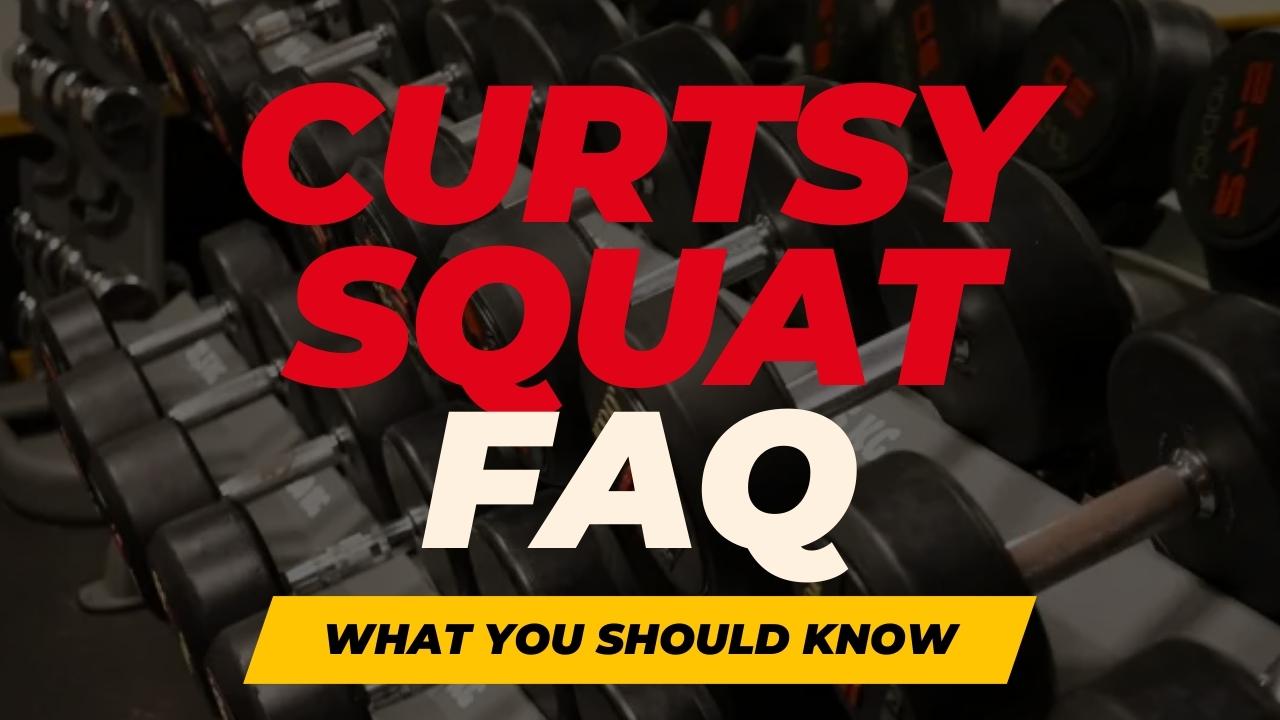
What are the benefits of curtsy lunge or squat exercise?
There are several benefits with the curtsy lunge or squat exercise, a dynamic variation of the traditional lunge, which is why I often include it in the custom workout plans I create for my online fitness coaching client. It brings a multitude of benefits primarily for those that are wanting to target the lower body muscles. By stepping diagonally behind the body, rather than straight back as in a standard lunge, the curtsy exercise engages and strengthens the gluteus medius and minimus, muscles crucial for hip stabilization and lateral movement. This distinctive movement pattern also intensively works the quadriceps, hamstrings, and calves, providing a comprehensive lower body workout. Additionally, the curtsy exercise, with its lateral and cross-body movement, enhances hip flexibility and mobility, which is beneficial for overall joint health and functional movements in daily life.
Beyond muscle strengthening and flexibility, the curtsy exercise is notable for its impact on balance and core stability. The cross-body movement necessitates a higher degree of balance and coordination, engaging the core muscles to maintain posture and stability throughout the exercise. This makes it an excellent choice for those looking to improve their overall balance and proprioception. Moreover, the unilateral nature of the exercise helps in identifying and correcting muscular imbalances, ensuring a symmetrical development of strength and flexibility. The inclusion of curtsy exercises in a workout routine not only adds variety, breaking the monotony of traditional lunges and squats, but also elevates the functional fitness aspect, preparing the body for complex, multi-directional movements encountered in sports and everyday activities.
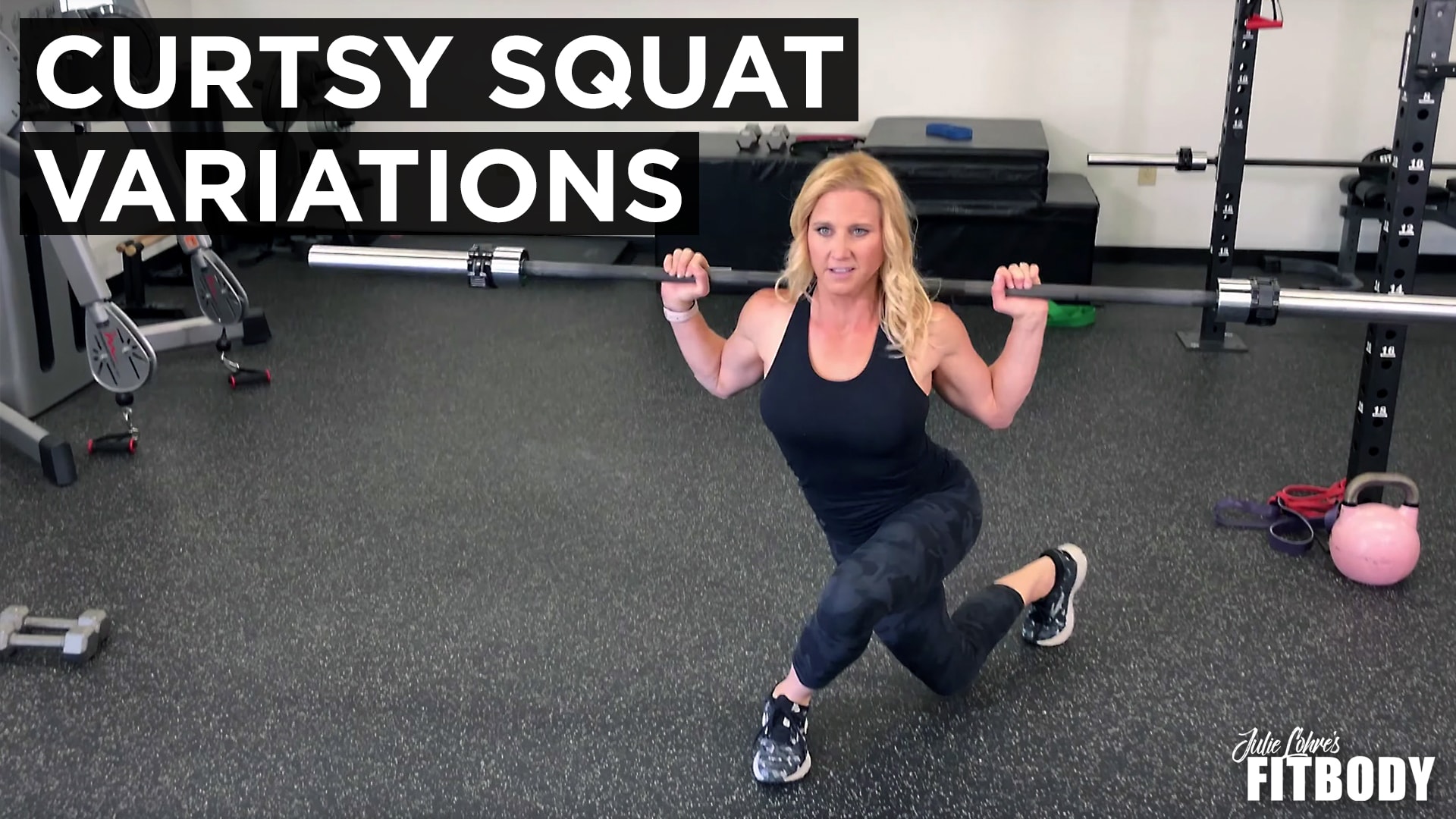
How often should you include the curtsy lunge in your workout?
The frequency of including the curtsy lunge in your workout depends on several factors, including your overall fitness goals, the intensity of your workouts, and how it fits into your total exercise routine. Generally, it’s recommended to incorporate lower body exercises like the curtsy lunge 2-3 times per week. This frequency allows for sufficient muscle recovery while also ensuring consistent muscle engagement for strength and endurance development.
If you are focusing on strength training, you might integrate curtsy lunges into a leg-focused workout day, ensuring that you work on all major muscle groups of the lower body during that session. For those aiming for a more balanced, full-body fitness routine, curtsy lunges can be included in circuit training or high-intensity interval training (HIIT) sessions, which typically occur several times a week.
It’s important to listen to your body and allow for adequate rest. If you experience soreness or fatigue, it might be beneficial to reduce the frequency or intensity temporarily. As with any exercise, proper form is crucial in the curtsy lunge to maximize benefits and minimize the risk of injury. Starting with bodyweight and gradually adding resistance as you become more comfortable with the movement can help in safely integrating this exercise into your routine. Remember, individual fitness levels and goals vary, so it’s always a good idea to consult with a fitness professional or physical therapist to tailor your workout plan to your specific needs.
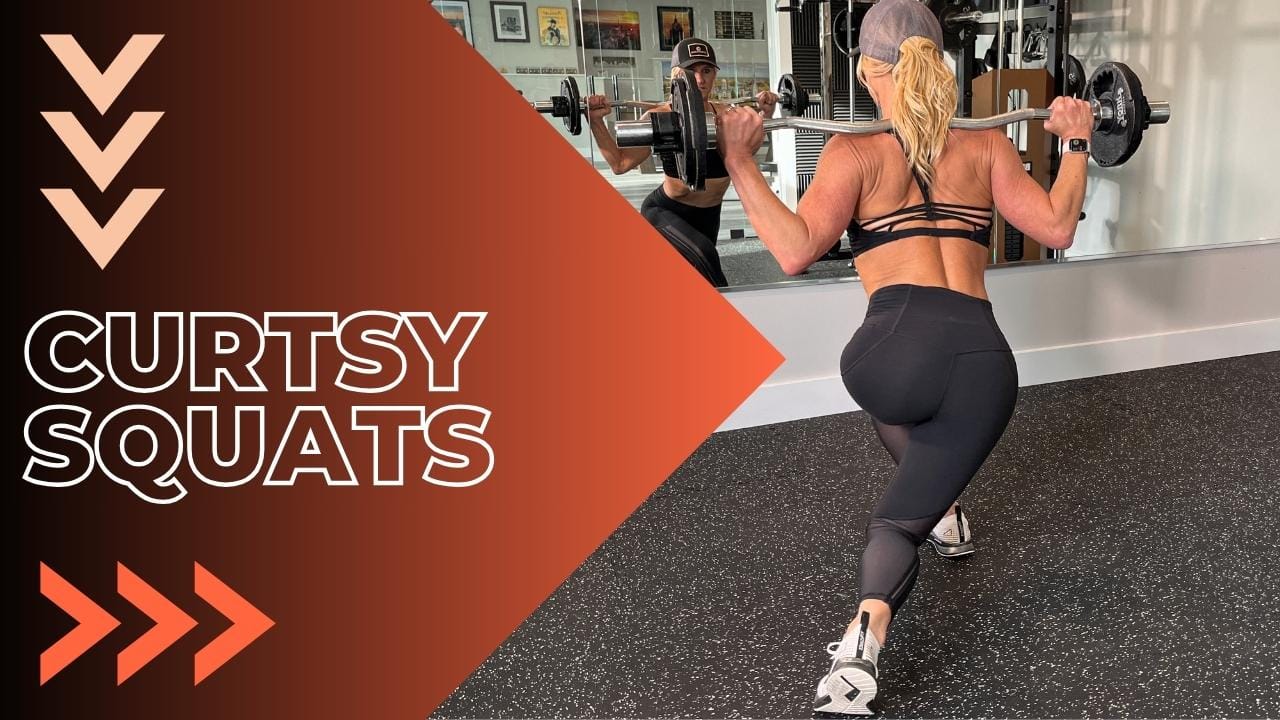
Should you use weights like a barbell or dumbbell with the curtsy lunge?
Using weights like a barbell or dumbbell with the curtsy lunge can be highly beneficial for increasing the intensity and effectiveness of the exercise, particularly for those looking to build strength and muscle definition in the lower body. Adding external weights challenges the muscles more than bodyweight alone, enhancing muscle engagement and overall strength development. Dumbbells offer the advantage of easy handling and balance, making them a popular choice for this exercise. A barbell, on the other hand, can be used for added intensity, but it requires more stability and control, making it suitable for more advanced practitioners. It’s crucial, however, to master the form of the curtsy lunge with bodyweight first before adding weights, to ensure proper technique and avoid injury. Gradually increasing the weight as you become more comfortable with the movement allows for progressive muscle development while maintaining safety.
Are curtsy lunges better than reverse lunges?
Comparing curtsy lunges to reverse lunges isn’t a matter of one being universally better than the other; rather, it depends on your specific fitness goals and needs. Curtsy lunges are excellent for targeting the gluteus medius and minimus, as well as improving hip mobility and lateral stability, making them ideal for those looking to enhance side-to-side movement and hip strength. Reverse lunges, on the other hand, focus more on the quadriceps and the gluteus maximus, offering a more straightforward, sagittal plane movement which can be preferable for straightforward strength building and joint alignment. Both exercises have their place in a well-rounded lower body workout routine, and the choice between them should be based on individual goals, mobility, and preferences. For comprehensive development, it’s beneficial to include a variety of lunge variations, including both curtsy and reverse lunges, to ensure balanced muscle development and functional strength.
Are curtsy lunges bad for your knees?
Curtsy lunges or curtsy squats, when performed with proper form, are generally not bad for the knees, and can in fact be beneficial for strengthening the muscles around the knee joint. However, due to the unique, cross-body motion of the exercise, it places a different kind of stress on the knee compared to more straightforward lunges. This can be problematic for individuals with pre-existing knee conditions or those who have not adequately built up their leg and core strength. It’s crucial to ensure proper alignment during the exercise – the knee should track over the toes and not extend beyond them – to minimize stress on the knee joint. If there’s any pain or discomfort during the exercise, it’s advisable to stop and consult a physical therapist. Modifications or alternative exercises may be recommended based on individual needs and fitness levels. As with any exercise, listening to your body and focusing on correct technique is key to avoiding injury.
Why are curtsy lunges so hard?
Curtsy lunges are perceived as challenging due to their unique movement pattern that not only requires strength but also a higher degree of balance and coordination compared to traditional lunges. This exercise involves a diagonal, cross-body step that engages the gluteal muscles, particularly the gluteus medius, and other stabilizing muscles in a way that’s less familiar to most people’s usual movement patterns. The lateral and rotational component of the curtsy lunge also calls for significant core engagement to maintain balance and proper posture, adding to its difficulty. Additionally, because it’s a unilateral exercise, it can expose and challenge any existing muscle imbalances or weaknesses, making it feel more demanding, especially for beginners or those not regularly performing multi-planar movements. The combination of these factors makes curtsy lunges a challenging yet effective exercise for developing lower body strength, balance, and functional mobility.

